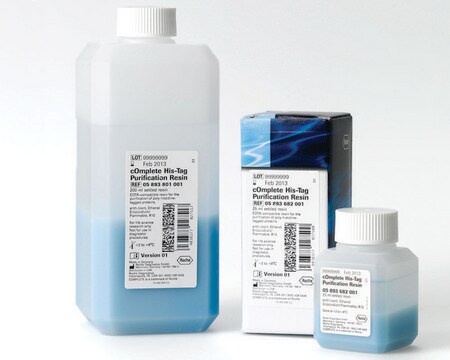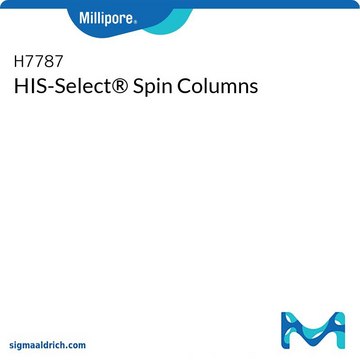I1408
IMAC-Select Affinity Gel
(1:1 suspension in a 30% ethanol solution)
Synonym(s):
Affinity Gel
About This Item
Recommended Products
form
(1:1 suspension in a 30% ethanol solution)
shelf life
1 yr
technique(s)
affinity chromatography: suitable
impurities
≤0.08 Metal Contamination (μmol/ml packed gel)
matrix
6% beaded agarose
capacity
10-30 μmol/mL binding capacity (Cu+2)
shipped in
wet ice
storage temp.
2-8°C
Application
Physical form
Preparation Note
Other Notes
Signal Word
Warning
Hazard Statements
Precautionary Statements
Hazard Classifications
Flam. Liq. 3
Storage Class Code
3 - Flammable liquids
WGK
WGK 3
Flash Point(F)
120.2 °F - closed cup
Flash Point(C)
49 °C - closed cup
Personal Protective Equipment
Regulatory Listings
Regulatory Listings are mainly provided for chemical products. Only limited information can be provided here for non-chemical products. No entry means none of the components are listed. It is the user’s obligation to ensure the safe and legal use of the product.
FSL
Group 4: Flammable liquids
Type 2 petroleums
Hazardous rank III
Water insoluble liquid
ISHL Indicated Name
Substances Subject to be Indicated Names
ISHL Notified Names
Substances Subject to be Notified Names
JAN Code
I1408-VAR:
I1408-100ML:4548173962900
I1408-25ML:4548173962917
I1408-5ML:4548173962924
I1408-BULK:
Certificates of Analysis (COA)
Search for Certificates of Analysis (COA) by entering the products Lot/Batch Number. Lot and Batch Numbers can be found on a product’s label following the words ‘Lot’ or ‘Batch’.
Already Own This Product?
Find documentation for the products that you have recently purchased in the Document Library.
Customers Also Viewed
Our team of scientists has experience in all areas of research including Life Science, Material Science, Chemical Synthesis, Chromatography, Analytical and many others.
Contact Technical Service









